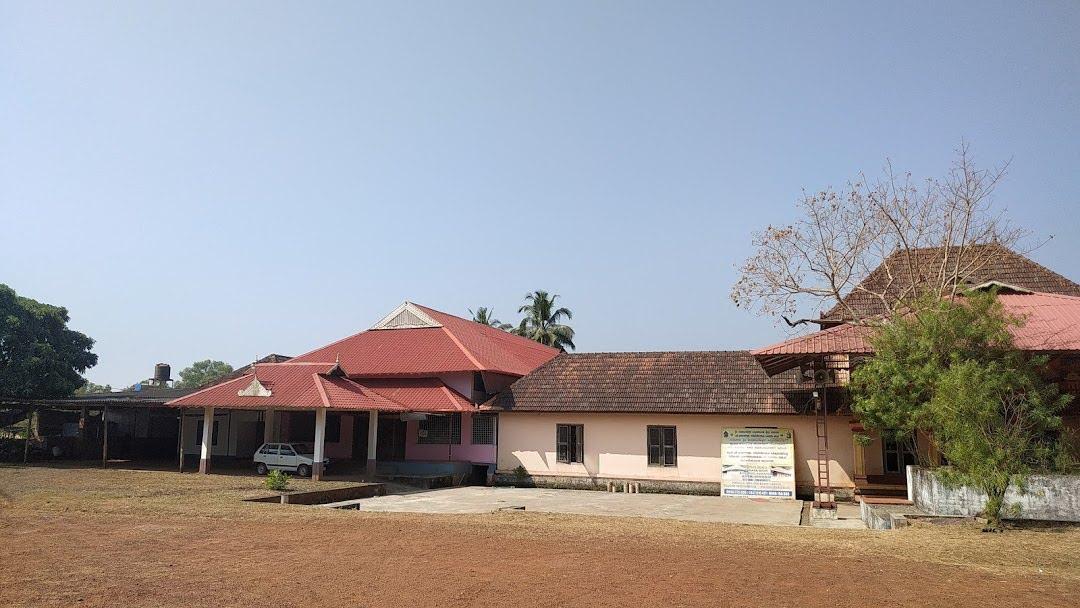The origins of Sri Subrahmanya Swami Temple in Bela, Kasaragod stretch back centuries. Local legend tells a fascinating tale. A ruler, struck by the sight of a cow and a tiger existing peacefully together, decided to honor this harmonious coexistence by building a temple on that very spot. Thus, the temple dedicated to Lord Subrahmanya, also known as Murugan or Skanda, came to be. The Adiga family, entrusted with the temple's care for generations, continues to perform daily pujas, upholding this historic place of worship.

Sree Subramanya Swamy Temple
The Sri Subramanya Swamy Temple, located in Bela village of Kasaragod District, is renowned for its association with the belief that people with "Sarpa Dosha'' visit to seek relief from this affliction. The main deity of the temple is Lord Subramania, and it also houses other deities including Lord Ayyappa, Lord Ganesha, Goddess Durga, and various Naga deities.
Timings
Morning : 6:00 AM to 12 PM & Evening : 5:00 PM to 8:00 PM
Entry Fee
Free of charge
Do's and Don'ts
- Dress Code: Dress modestly and conservatively. Women should preferably wear sarees or salwar kameez, while men should wear traditional attire like dhoti or mundu.
- Respect for Deities: Show reverence and respect to the deities and idols inside the temple. Follow the instructions of priests and temple authorities regarding rituals and offerings.
- Cleanliness: Maintain personal hygiene and cleanliness. Remove footwear before entering the temple premises and wash hands and feet if required.
- Silence: Maintain silence inside the temple premises to preserve the peaceful atmosphere conducive to prayer and meditation.
- Offerings: If making offerings, ensure they are appropriate and made with sincerity and devotion. Follow the specific rituals and procedures for each offering.
- Follow Customs: Observe and participate in temple customs and rituals respectfully, such as circumambulating the sanctum sanctorum clockwise and participating in puja ceremonies.
- Charity: Consider contributing to temple charities or donation boxes if you wish to support the temple's activities and maintenance.
- Footwear: Do not wear footwear inside the temple premises. Leave them outside in designated areas or as instructed by temple authorities.
- Cell Phones: Avoid using cell phones or electronic devices inside the temple, as they can disturb the sanctity and concentration of others.
- Non-Vegetarian Food: Refrain from bringing or consuming non-vegetarian food inside the temple premises, as it is considered inappropriate in a place of worship.
- Disrespectful Behaviour: Avoid loud or disrespectful behaviour, arguments, or any form of disturbance that may disrupt the peaceful environment of the temple.
- Photography: In many temples, photography is restricted inside the sanctum sanctorum or during certain rituals. Always ask for permission before taking photos.
- Irreverence: Do not touch or climb on the temple structures, idols, or sacred objects without permission. Treat everything inside the temple with reverence.
- Gender-specific Rules: Some temples may have specific rules regarding entry and participation based on gender or marital status. Respect and adhere to these guidelines.
Dress Code
For Men: Traditional attire like dhoti (mundu) with or without angavastram (upper cloth) is preferred. Alternatively, men can wear kurta-pyjamas or formal trousers with a shirt. Avoid wearing shorts or sleeveless shirts.
For Women: Sarees, preferably in traditional styles, are commonly worn. If wearing a saree, it's respectful to drape it properly and cover the head as per local customs. Salwar kameez or churidar suits are also appropriate. Avoid wearing tight or revealing clothing.
How to reach
By Air: Kannur International Airport is situated 124 KM from the temple. From the airport, you can hire a taxi or use public transportation to reach the temple.
By Train : Kasargod Railway Station is situated 13.9 KM from the Temple. From the railway station, you can hire a taxi or use public transportation to reach the temple.
By Road: Kasargod KSRTC Bus Stand is situated 12.7 KM from the Temple.
Nearby Cities and Rivers
Rivers:
- Chandragiri River: This river flows near Kasaragod and passes through nearby regions, contributing to the local ecology and agricultural activities.
- Payaswini River: Also known as Chandragiri River, it originates in the Western Ghats and flows through Kasaragod district, providing water for irrigation and supporting local communities.
Cities and Towns:
- Kasaragod: The main city and administrative headquarters of Kasaragod district, known for its historical significance, cultural heritage, and educational institutions.
- Mangalore: Located in neighbouring Karnataka state, Mangalore is a major port city known for its scenic beaches, temples, and vibrant cultural scene. It serves as an important commercial and educational hub.
- Kanhangad: A town near Kasaragod, Kanhangad is known for its temples, including the famous Anandashram, and serves as a centre for commerce and cultural activities in the region.
- Kumbla: A coastal town in Kasaragod district known for its scenic beauty, traditional fishing communities, and cultural festivals.